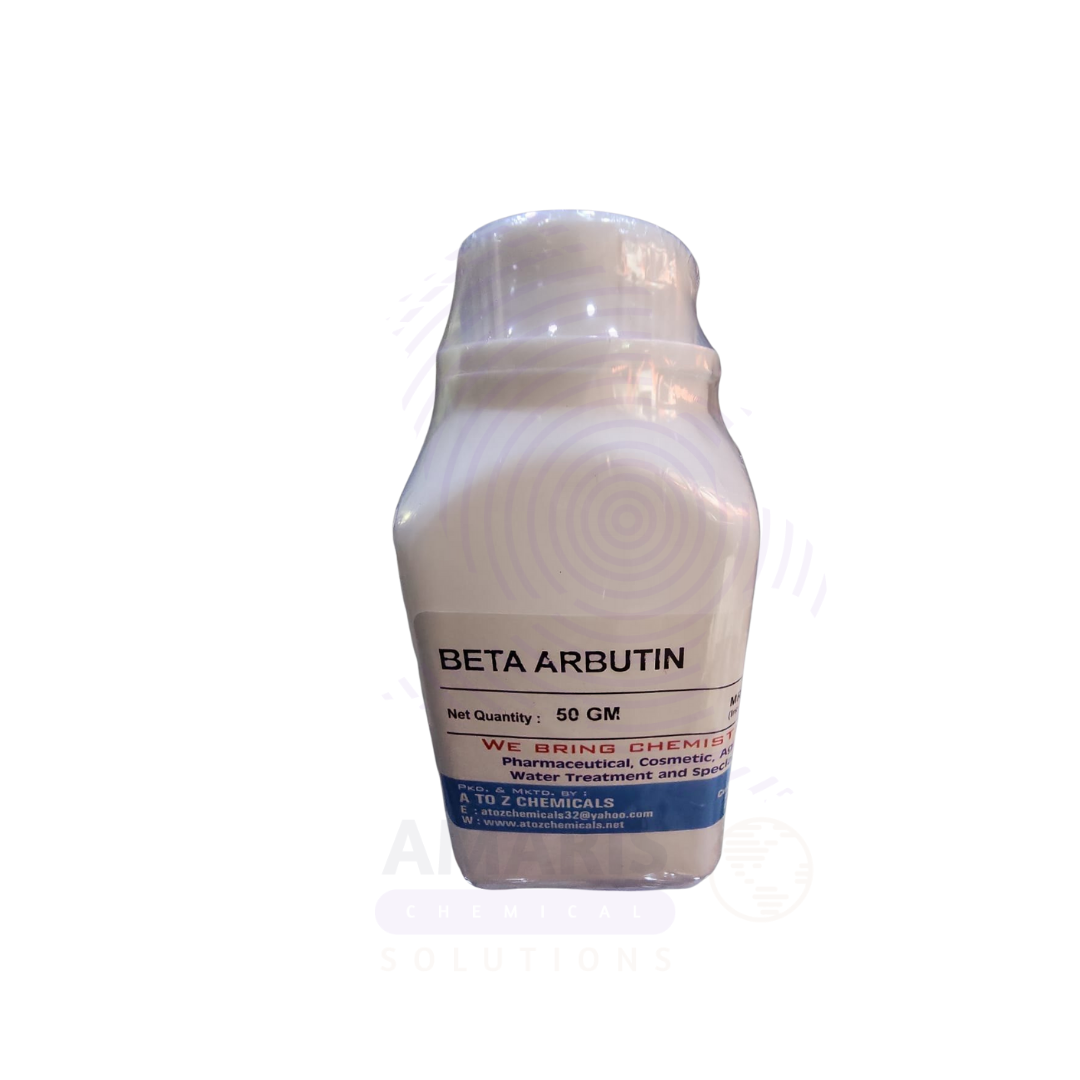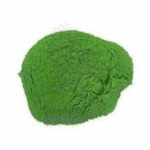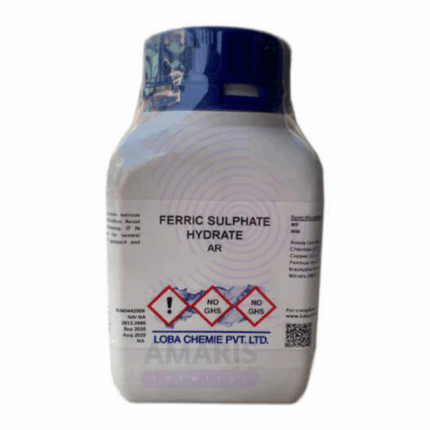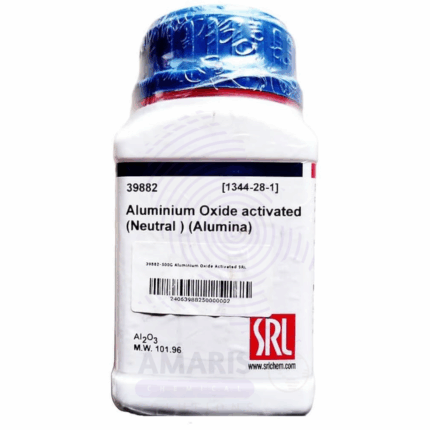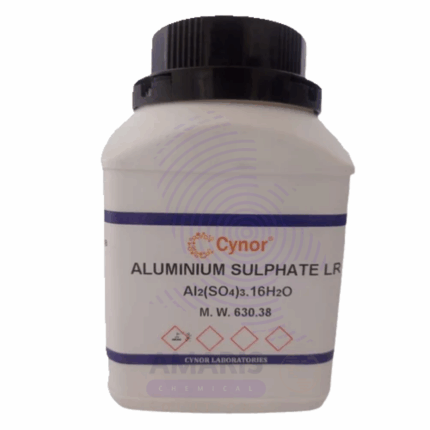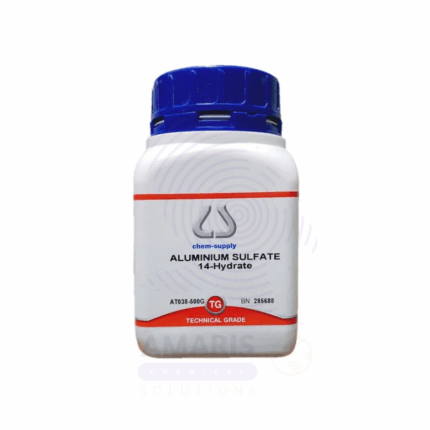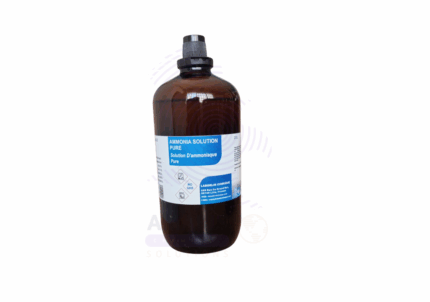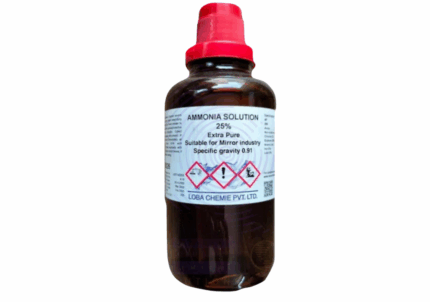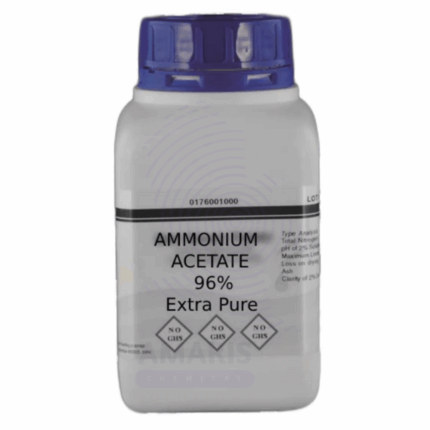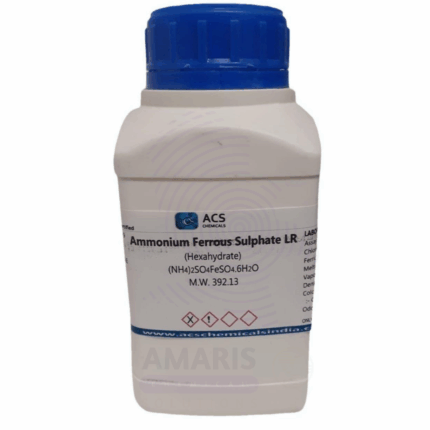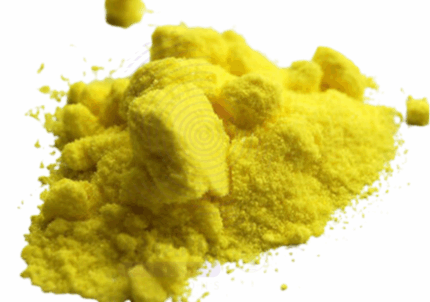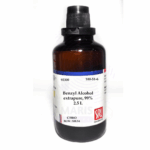
Beta Arbutin Extra Pure
$ 30.00 Original price was: $ 30.00.$ 29.56Current price is: $ 29.56.
Beta Arbutin Extra Pure is a high-purity, white crystalline powder primarily used in laboratory research involving biochemical, pharmaceutical, and cosmetic studies. It is a glycosylated hydroquinone known for its role as a tyrosinase inhibitor, making it significant in the investigation of melanin biosynthesis and skin depigmentation mechanisms. In pharmaceutical and cosmetic research, it is often evaluated for its antioxidant properties and potential therapeutic applications in skin-lightening formulations. The extra pure grade ensures high chemical stability and minimal impurities, supporting reliable results in sensitive assays and analytical procedures. It should be stored in a cool, dry environment, protected from light and moisture.
Beta Arbutin Extra Pure
Primary Uses
- Standard in Skin Depigmentation Studies
- Used as a reference compound in dermatological and pharmaceutical labs for evaluating melanin inhibition and tyrosinase enzyme activity.
- Biochemical Assays
- Utilized in enzyme kinetics experiments to study tyrosinase inhibition mechanisms — key in melanogenesis research.
- Chromatography Reference Standard
- Applied in HPLC, TLC, and LC-MS as a standard or analyte for separation and quantification of phenolic compounds in plant extracts or cosmetic formulations.
- Cell Culture and Cytotoxicity Testing
- Employed in in vitro cell culture studies to examine its cytotoxicity, antioxidant capacity, and influence on melanocytes or keratinocytes.
Secondary Uses
- Antioxidant Studies in Life Science Labs
- Used as a model compound to study free radical scavenging, antioxidant pathways, or oxidative stress responses.
- Phytochemical Screening
- Appears as a marker compound in the qualitative or quantitative analysis of plant-based ingredients, especially in herbal cosmetics.
- Teaching Functional Group Chemistry
- Useful in demonstrating glycosidic bond cleavage, phenolic reactivity, and structure–activity relationships in higher-level organic chemistry education.
- Comparison in Cosmetic Formulation Testing
- In research labs, it may be used to compare efficacy, safety, and penetration of active agents in formulation prototypes.
| PACK SIZE |
2.5 Litres Plastic bottle |
|---|
1. Basic Identification Attributes
- Chemical Name: Hydroquinone β-D-glucopyranoside
- Common Name: Beta Arbutin
- CAS Number: 497-76-7
- HS Code: 2938.90.90
- Molecular Formula: C₁₂H₁₆O₇
- Molar Mass: 272.25 g/mol
- Synonyms:
- β-Arbutin
- Arbutoside
- 4-Hydroxyphenyl β-D-glucopyranoside
- Arbutin (when beta form is implied)
2. Physical & Chemical Properties
- Physical State: Solid
- Color & Odor: White crystalline powder, odorless
- Boiling Point: Decomposes before boiling
- Melting Point: ~195–197 °C
- Density: ~1.55 g/cm³ (estimated)
- Solubility:
- In Water: Freely soluble
- In Alcohols: Soluble in ethanol and methanol
- pH (1% solution): ~5.0–7.0
- Vapor Pressure: Negligible (non-volatile)
- Flash Point: Not applicable (non-flammable solid)
- Autoignition Temperature: Not readily flammable
- Viscosity: Not applicable (solid)
3. Safety & Hazard Attributes
- GHS Classification:
- Not classified as hazardous under normal lab conditions
- NFPA Ratings:
- Health: 1
- Flammability: 0
- Reactivity: 0
- Exposure Limits:
- Not established by OSHA or ACGIH
- Reactivity:
- Stable under normal conditions
- May degrade under high heat or light
- Avoid strong oxidizers
4. Storage & Handling Attributes
- Storage Conditions:
- Store in a cool, dry, dark place
- Avoid light and moisture exposure
- Incompatible Materials:
- Strong oxidizers, acids
- Container Type:
- Tightly sealed amber glass or HDPE bottles
- Shelf Life:
- 2–3 years under ideal storage
- Special Handling Requirements:
- Use gloves and goggles
- Handle in a clean, low-humidity environment
5. Regulatory & Compliance Attributes
- Regulatory Status:
- Not specifically regulated as a hazardous chemical
- Used in cosmetics and analytical chemistry
- Hazard Symbols (GHS pictograms):
- Not classified under GHS
- UN Number: Not classified for transport as hazardous
- Waste Disposal Method:
- Dispose according to local regulations as non-hazardous organic waste
6. Environmental & Health Impact
- Ecotoxicity:
- Low aquatic toxicity at lab-use concentrations
- Persistence in Environment:
- Biodegradable under natural conditions
- Carcinogenicity/Mutagenicity:
- Not classified as carcinogenic
- May release hydroquinone upon metabolism, which is regulated
- Biodegradability:
- Readily biodegradable
SAFETY PRECAUTIONS
- Personal Protective Equipment (PPE):
- Wear lab coat, chemical-resistant gloves, and safety goggles.
- Use in a well-ventilated area or under a fume hood.
- Handling:
- Avoid generating dust.
- Prevent contact with eyes, skin, and clothing.
- Do not inhale dust or vapors.
- Storage:
- Store in a tightly closed container in a cool, dry place.
- Protect from light, moisture, and heat.
- Hygiene Measures:
- Wash hands thoroughly after use.
- Avoid eating or drinking near chemical handling zones.
FIRST AID MEASURES
- Inhalation:
- Move to fresh air.
- Seek medical attention if respiratory symptoms occur.
- Skin Contact:
- Wash with soap and water.
- Remove contaminated clothing.
- Get medical attention if irritation persists.
- Eye Contact:
- Rinse eyes with plenty of water for 15 minutes.
- Lift eyelids occasionally.
- Consult an eye specialist if irritation continues.
- Ingestion:
- Rinse mouth with water.
- Do not induce vomiting.
- Seek medical advice immediately.
FIRE FIGHTING MEASURES
- Extinguishing Media:
- Use dry chemical, foam, carbon dioxide (CO₂), or water spray.
- Fire Hazards:
- Product may decompose at high temperatures forming toxic fumes (e.g., CO, CO₂).
- Protective Equipment:
- Firefighters should wear self-contained breathing apparatus (SCBA) and full protective gear.
- Additional Notes:
- Containers may rupture if exposed to fire or extreme heat.
- Prevent runoff from contaminating water sources.


 Preservatives(food)
Preservatives(food) Flavor Enhancers
Flavor Enhancers Acidulants
Acidulants Sweeteners
Sweeteners Antioxidants
Antioxidants Colorants(food)
Colorants(food) Nutraceutical Ingredients (food)
Nutraceutical Ingredients (food) Nutrient Supplements
Nutrient Supplements Emulsifiers
Emulsifiers
 Collectors
Collectors Dust Suppressants
Dust Suppressants Explosives and Blasting Agents
Explosives and Blasting Agents Flocculants and Coagulants
Flocculants and Coagulants Frothers
Frothers Leaching Agents
Leaching Agents pH Modifiers
pH Modifiers Precious Metal Extraction Agents
Precious Metal Extraction Agents
 Antioxidants(plastic)
Antioxidants(plastic) Colorants (Pigments, Dyes)
Colorants (Pigments, Dyes) Fillers and Reinforcements
Fillers and Reinforcements Flame Retardants
Flame Retardants Monomers
Monomers Plasticizers
Plasticizers Polymerization Initiators
Polymerization Initiators Stabilizers (UV, Heat)
Stabilizers (UV, Heat)
 Antifoaming Agents
Antifoaming Agents Chelating Agents
Chelating Agents Coagulants and Flocculants
Coagulants and Flocculants Corrosion Inhibitors
Corrosion Inhibitors Disinfectants and Biocides
Disinfectants and Biocides Oxidizing Agents
Oxidizing Agents pH Adjusters
pH Adjusters Scale Inhibitors( water)
Scale Inhibitors( water)
 Antioxidants(cosmetic)
Antioxidants(cosmetic) Emollients
Emollients Fragrances and Essential Oils
Fragrances and Essential Oils Humectants
Humectants Preservatives
Preservatives Surfactants(cosmetic)
Surfactants(cosmetic) Thickeners
Thickeners UV Filters
UV Filters
 Fertilizers
Fertilizers Soil Conditioners
Soil Conditioners Plant Growth Regulators
Plant Growth Regulators Animal Feed Additives
Animal Feed Additives Biostimulants
Biostimulants Pesticides (Herbicides, Insecticides, Fungicides)
Pesticides (Herbicides, Insecticides, Fungicides)
 Active Pharmaceutical Ingredients (APIs)
Active Pharmaceutical Ingredients (APIs) Excipients
Excipients Solvents(pharmaceutical)
Solvents(pharmaceutical) Antibiotics
Antibiotics Antiseptics and Disinfectants
Antiseptics and Disinfectants Vaccine Adjuvants
Vaccine Adjuvants Nutraceutical Ingredients (pharmaceutical)
Nutraceutical Ingredients (pharmaceutical) Analgesics & Antipyretics
Analgesics & Antipyretics
 Analytical Reagents
Analytical Reagents Solvents(lab)
Solvents(lab) Chromatography Chemicals
Chromatography Chemicals Spectroscopy Reagents
Spectroscopy Reagents microbiology-and-cell-culture-reagents
microbiology-and-cell-culture-reagents Molecular Biology Reagents
Molecular Biology Reagents Biochemical Reagents
Biochemical Reagents Inorganic and Organic Standards
Inorganic and Organic Standards Laboratory Safety Chemicals
Laboratory Safety Chemicals Specialty Laboratory Chemicals(Special Laboratory Equipment)
Specialty Laboratory Chemicals(Special Laboratory Equipment)
 Demulsifiers
Demulsifiers Hydraulic Fracturing Fluids
Hydraulic Fracturing Fluids Scale Inhibitors(oil)
Scale Inhibitors(oil) Surfactants(oil)
Surfactants(oil) Drilling Fluids
Drilling Fluids
 Dyes and Pigments
Dyes and Pigments Bleaching Agents
Bleaching Agents Softening Agents
Softening Agents Finishing Agents
Finishing Agents Antistatic Agents
Antistatic Agents
 Admixtures
Admixtures Waterproofing Agents
Waterproofing Agents Sealants and Adhesives
Sealants and Adhesives Curing Compounds
Curing Compounds Concrete Repair Chemicals
Concrete Repair Chemicals Anti-Corrosion Coatings
Anti-Corrosion Coatings
 Surfactants(cleaning)
Surfactants(cleaning) Builders
Builders Enzymes
Enzymes Solvents (Cleaning)
Solvents (Cleaning) Fragrances
Fragrances
 Electronic Chemicals
Electronic Chemicals Catalysts
Catalysts Lubricants
Lubricants Photographic Chemicals
Photographic Chemicals Refrigerants
Refrigerants Automotive chemicals
Automotive chemicals Pyrotechnic Chemicals
Pyrotechnic Chemicals
 Biodegradable Surfactants
Biodegradable Surfactants Bio-based Solvents
Bio-based Solvents Renewable Polymers
Renewable Polymers Carbon Capture Chemicals
Carbon Capture Chemicals Wastewater Treatment Chemicals
Wastewater Treatment Chemicals
 Pigments
Pigments Solvents(paint)
Solvents(paint) Specialty Coatings
Specialty Coatings Binders/Resins
Binders/Resins Additives
Additives Driers
Driers Anti-Corrosion Agents
Anti-Corrosion Agents Functional Coatings
Functional Coatings Application-Specific Coatings
Application-Specific Coatings
 Fresh Herbs
Fresh Herbs Ground Spices
Ground Spices Whole Spices
Whole Spices Spice Blends
Spice Blends Dried Herbs
Dried Herbs
 Leavening Agents
Leavening Agents Dough Conditioners
Dough Conditioners Flour Treatments
Flour Treatments Fat Replacers
Fat Replacers Decoratives
Decoratives Preservatives(baking)
Preservatives(baking)
 Plasticizers & Softeners
Plasticizers & Softeners Reinforcing Agents
Reinforcing Agents Adhesion Promoters
Adhesion Promoters Vulcanizing Agents
Vulcanizing Agents Antidegradants
Antidegradants Blowing Agents
Blowing Agents Fillers & Extenders
Fillers & Extenders Accelerators & Retarders
Accelerators & Retarders